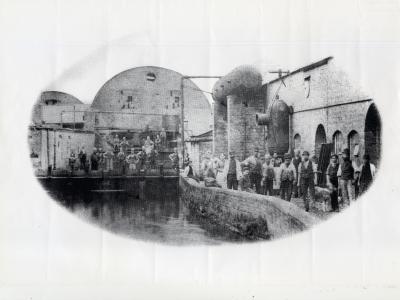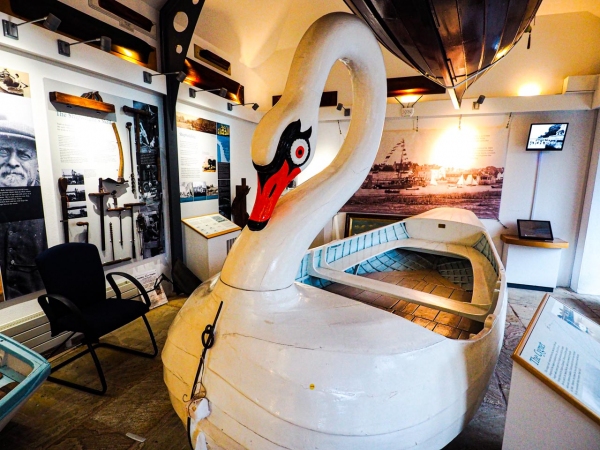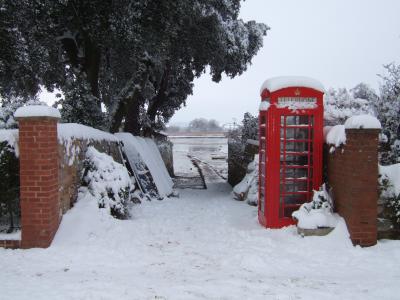The Cygnet and Black Swans
By: Julie Rashbrooke
Added: 06 August 2020
The beautiful white Cygnet is the emblem of Topsham Museum. For centuries Europeans believed that all swans were white. That all changed in 1697 when Willem de Vlamingh reached Western Australia and was amazed to see black swans on the estuary, he named Swan River. These days, we need go no further than Underway in Topsham to see black swans. Usually in pairs, they mate for life, and they can often be seen on the Exe. When they’re cross or impressing a potential mate, they flap their wings loudly and if you’re very lucky, you may see one take off. Only then can you see that their flight feathers are pure white. But how did ‘our’ black swans get here?
Although native to southern Australia, black swans were soon introduced into New Zealand, and some were brought to the UK to grace private estates alongside peacocks and other exotics. Around 1900, John Nash emigrated from Dawlish to New Zealand and on a trip home, he brought some swan eggs with him. Unfortunately, this line of swans died out, so in the 1940s Captain CRS Pitman presented Dawlish with replacements. They’ve been there ever since and have even been adopted as the town’s unofficial symbol. Sometimes the swans range as far as the Exe and Teign estuaries and that’s when we’re lucky enough to see them at Topsham.
Years ago, alongside the real life white and black swans, the Museum’s Cygnet could also be seen on the river. She was built in Exmouth in 1861 as tender to the bigger Swan of the Exe. The Swan was 6mlong, just over 2m wide and could seat 16 people. She had wings which formed the sails and could be propelled by iron feet operated by two men turning a crank handle in the centre of the boat. The Swan’s designer and owner, Captain George Peacock, used the sails when sailing downwind and old photos show him sitting in the stern steering, wearing his top hat The Cygnet was built to a similar design but had oars for its motive power. Another four cygnets were planned and as late as 1958, three of them, including our own Cygnet, were still afloat on the Exe.
A Black Swan event is one that occurs randomly and unexpectedly and has widespread ramifications. Statisticians are now describing the current strange times as one such event. When the current black swan event is over, do visit the Museum again and say hello to the Cygnet.
Topsham Museum news
-

Free CoffeeTea and Cake!!
Topsham Museum
-

Paper Mill Exhibition
Topsham Museum
-

The Thomas the Tank Engine Man My Father By Veronica Chambers
Topsham Museum
-

Lunchtime Lecture: Thursday 18th April Churchill's Secret Army in East Devon
Topsham Museum
-

Topsham Museum is open for the 2024
Topsham Museum
-

Winter Lecture: Exploring the Indigo Trail
Topsham Museum
-

Opening Day March 27th
Topsham Museum
-

A Special Mother's Day Tea
Topsham Museum
-

The Romans in Topsham and Beyond Day Symposium
Topsham Museum
-

Christmas Market
Topsham Museum
-
Christmas Events 2023
Topsham Museum
-

September Lunchtime Lecture, Tuesday 19th September
Topsham Museum
-

Town Fayre Coffee Morning
Topsham Museum
-

Games of Yesteryear an event for children
Topsham Museum
-

July Lunchtime Lecture RAMM, a cracking museum
Topsham Museum








